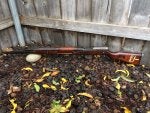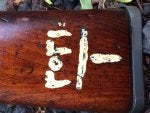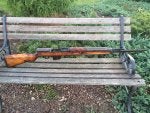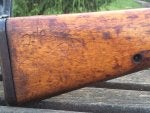Czechoslovakia was formed after WW1. By 1947-48 Czechoslovakia wanting to get away from bolt-action rifles and upgrade to a semiautomatic rifle for its Army, the Czechs decided not to accept the Soviet SKS and were being a little rebellious by introducing their own design for their infantry. They had their own accomplished small arms manufactures who have turned out some unique designs since the 1920’s. New designs were tested. The CZ502 won out with the best results designed by Jan Kratochvil. In 1952 it was adopted as the VZ52 in 7.62x45 which is a mid-range cartridge influenced by the German 7.92x33 Kurz cartridge used in the Sturmgewehr 44. This falls right between the 2 popular soviet cartridges 7.62x39 and 7.62x54r. The VZ52 and along with the VZ52 LMG (Light Machine Gun) added at the squad level are the only 2 guns made to shoot the 7.62x45 cartridge. Under pressure by the Soviets, Czechoslovakia did conform and adopt the Soviet 7.62x39 cartridge in 1957 switching production of the VZ52 to the same design designated VZ52/57 in 7.62x39. The VZ52/57 did add chrome lining to the barrel and pinned the barrel to the receiver. Also they baked black enamel paint on the receiver cover and metal on the hand guard instead of the VZ52’s grey phosphate finish. Another minor footnote is that the VZ52/57 was issued with a nylon/leather tipped sling instead of the fabric canvas/leather tipped sling. The magazine on the VZ52/57 has a flat floor plate and can only feed the 7.62x39 but the VZ52 mags can feed the 7.62x39 (with some occasional miss-feeds due to the shorter cartridge) as well as the 7.62x45. Both magazines will fit in the 2 rifles. Numrich Gun Parts sells a chamber conversion that glues into the breech of the VZ52 to accept the 7.62x39 for those who may many to shoot the more readily available less expensive round. Great care should be given to over-clean the chamber before usually using Loctite to glue chamber conversion in. I have heard a lot of reports of the conversion ring coming out with a cartridge. Spent cartridges should be inspected to make sure they did not eject with the ring and rapid fire should be avoided to help prevent ring dislocation.
Production of the VZ52 (some guns are marked M52 after the early model 52 designation) was an estimate of around 700,000+ rifles of which production started at Povazske Strjarne (AYM) and is stated they had some production problems. The first year of production, they only produced 5,000 VZ52’s. I believe that AYM production was probably around 150,000+ rifles. Production was started up at Ceska Zbrojovka Uhersky Brod (SHE) (today’s CZ still making fine guns today) to make up the shortfall of AYM production. Povazske Strjarne did not mark their receivers AYM until Ceska Zbrojovka (SHE) started producing the same gun. I have AYM’s dating up to 1956.
Since the majority of rifles are marked (SHE) some people referred to them as She’s but in actuality the troops that used them affectionately called them “Mary”. Well, that’s a she, isn’t it!
Production of the VZ52 (some guns are marked M52 after the early model 52 designation) was an estimate of around 700,000+ rifles of which production started at Povazske Strjarne (AYM) and is stated they had some production problems. The first year of production, they only produced 5,000 VZ52’s. I believe that AYM production was probably around 150,000+ rifles. Production was started up at Ceska Zbrojovka Uhersky Brod (SHE) (today’s CZ still making fine guns today) to make up the shortfall of AYM production. Povazske Strjarne did not mark their receivers AYM until Ceska Zbrojovka (SHE) started producing the same gun. I have AYM’s dating up to 1956.
Since the majority of rifles are marked (SHE) some people referred to them as She’s but in actuality the troops that used them affectionately called them “Mary”. Well, that’s a she, isn’t it!















